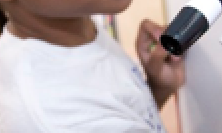Powerfull Voice of Kids - Digital & Media Literacy Education
- Professional
Description

You have high standards for your students’ work, and you may be seen as the go-to media professional in your school. You’re the kind of teacher who knows how to push your students to understand and emulate the professional conventions that you know is important to being taken seriously in the world of media creation. You may also be interested in getting your students into the real world of media creation, thinking about ways to bring other authors, professionals, and media-makers into your classroom to enrich the learning experience.
Protect
- Protect students from technical failure in their media productions and projects.
- Equip students to recognize how professional production carries specific messages that may be negative or harmful.
- Prevent organizational chaos with a hierarchal production model (with explicit roles) that limit students’ tendency to go off-task or be unproductive.
Empower
- Instill a sense of professionalism and promote concentrated effort on media production projects.
- Help students think of themselves as “real” authors speaking to real audiences in a professional language that users of mass media understand.
- Provide an academic or career path for students through media production and media industries by modeling professional skills, behaviors, and standards.
Strengths
Professionalism looks good. Professionals are usually good at holding students to a higher set of aesthetic standards than typical youth media projects. Professionals are often in charge of professional technology and equipment available at school. They also inspire students to look into continuing opportunities to create media in after-school and academic programs.
Challenges
Professionalism in and of itself can suffer from the “style over substance” problem. Students emulate professional models in news, film production, or graphic design, but do not necessarily bring the same rigor to academic or content aspects of the work. When professional values are only aesthetic, they may discourage students from thinking about the processes of research, analysis, and evaluation crucial to high-quality media projects.
Related Ideas
-
zoom
 Authors and Audiences
Authors and Audiences
Why authors create
...
-
zoom
 Warm & Cool Feedback
Warm & Cool Feedback
How feedback supports the creative process...